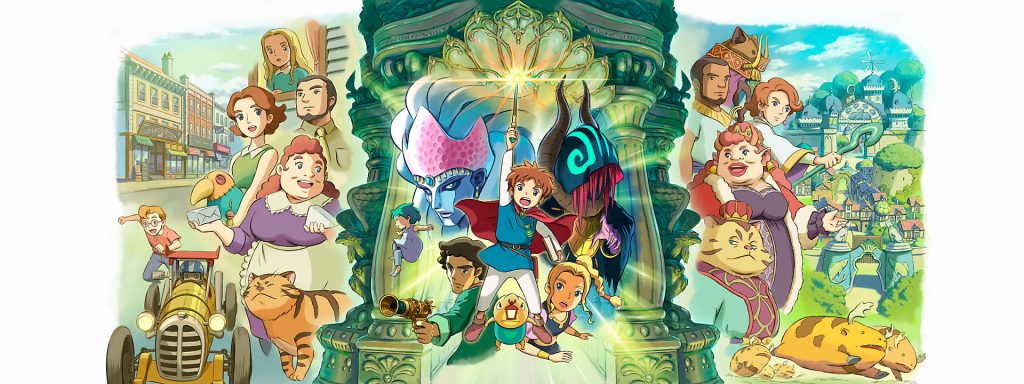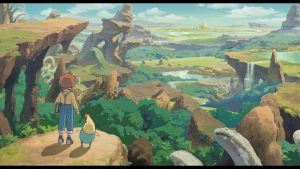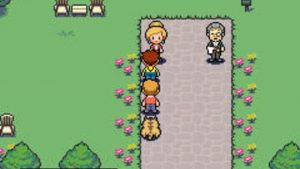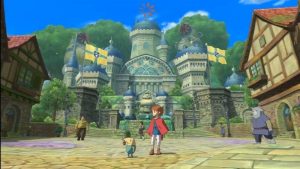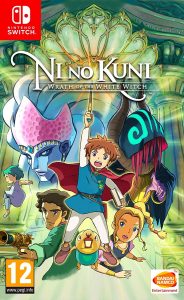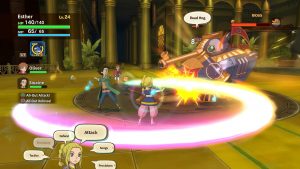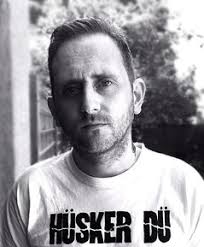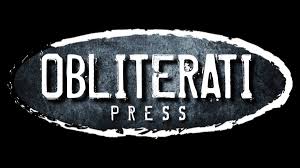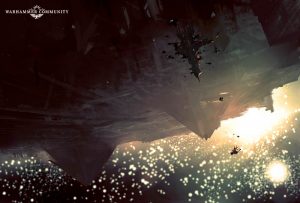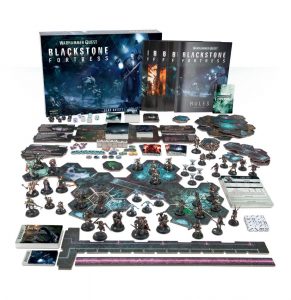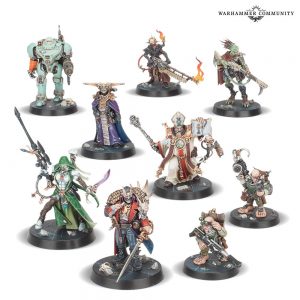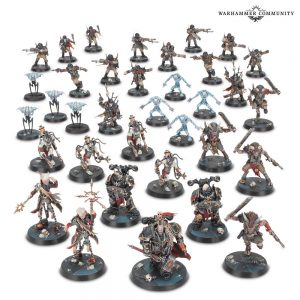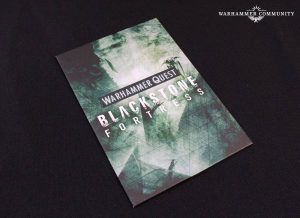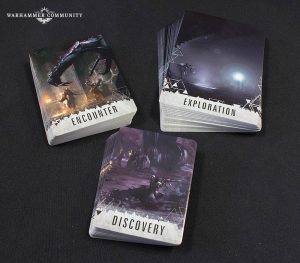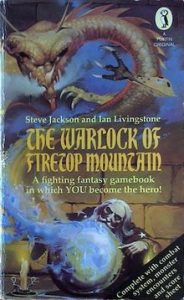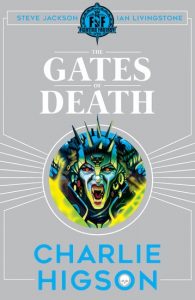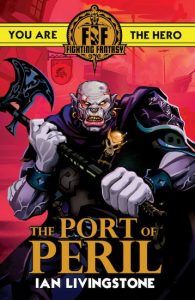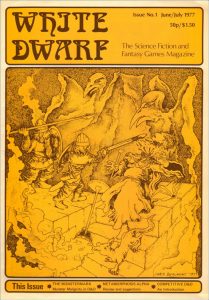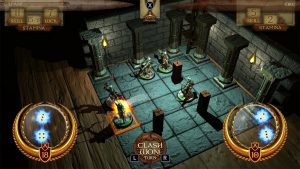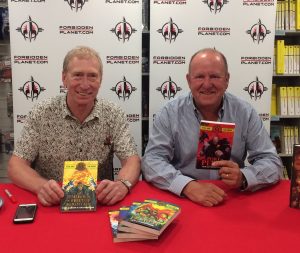Geekzine editor-in-chief Andy Jamieson, along with new contributor Graeme Wetherill, run through some of the April and May releases at the cinema, and tv/streaming services.
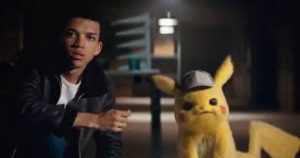
Justice Smith as Tim, with Pikachu, voiced by Ryan Reynolds.
Andy: Along comes a film like Detective Pikachu, something that utterly defies expectation. I went into this feeling curious to what fresh horror could be wreaked upon my mind. And duly came out bewildered. What an enjoyable film. It does admittedly help to have some grounding in the Pokémon universe (thank you to my 6 year old boy), as the film rattles along without much in the way of pandering to newbies. The crux of the story is an oddly workable blend of film noir and buddy-action-thriller laced with a surreal sense of humour, which is ultimately well suited to the equally surreal visuals. There’s no getting away from the fact that this is just bonkers. Exhibit A: there’s an interrogation scene featuring Mr Mime, a Pokémon who, yes, is a mime artist, a sequence mined mercilessly for every ounce of slapstick humour possible. All of the surrealism would be infuriating were it not for the freewheeling, witty script that anchors all the zany time, written by a whole bunch of folks, including the director Rob Letterman (previous credits include Jack Black films Goosebumps, and Gulliver’s Travels).The cast do their part too; Ryan Reynolds is on golden vocal form as Pikachu, dropping quizzical pun-bombs aplenty (“All I hear are consonants, all I see is nipples”), whilst Justice Smith keeps it together in the lead human role, proving once again what a great actor he is; charismatic, with an ability to move effortlessly between scenes of dramatic weight to those of pure slapstick. And even the great Bill Nighy and Ken Watanabe pop up in small, key roles. Detective Pikachu could have been so much worse without a great cast to pin it all on. This is a surprisingly good, energetic movie with a very appealing streak of madness.

Daenarys, Breaker of Plots, and Jon Snow, King of Earnest Scowling; each wondering WTF happened to Season 8…
The fantasy saga behemoth that is Game of Thrones returned to our screens in April with bloody fashion. (mild spoilers ahead, be warned…) After the high of season 6, and the wonky thrillfest of season 7, season 8 has no small responsibility in concluding the story. Five episodes in, the body count inevitably keeps climbing, and now we’re in the territory of guessing which main characters will survive to the end of the show. The first two episodes were curiously short and chatty, but episode three showed why. Depending on who you talk to, this episode was either predictable and dull, or thrilling and surprising. Personally, I think it falls somewhere between. There are some spectacular sequences (the Dothraki cavalry charge; the dragons fighting amidst the storm), and the carnage is brutal – but there is always the sense that our main heroes will make it out intact. The peril always feels manageable. The episode is wrapped up way too neatly. Not a whiff of a cliffhanger. Episode four just about lets you recover from the bloody mayhem of the previous episode before Plot Happens. It’s a strange, messy episode that highlights the issue with the previous one; seven years building up the threat of the Night King, and establishing Daenarys as a credible main challenger to the Iron Throne, all to be essentially undone within one episode. Awkward characters beats abound; Jon Snow has become a bit of a caricature of himself, and the incest plot arc between him and Daenarys is just unpleasant, and faintly ridiculous – even Jon senses this. One incestuous relationship was icky enough (Jaime and Cersei), two is dull repetition. The penultimate episode builds on the plot elements developed in four, particularly the ramifications of Jon’s true identity, and how that impacts his relationship with Daenarys, and their inner circles. The showrunners had an opportunity to furrow some interesting ground with these two central characters and they have abandoned that avenue to pursue something far more obvious and broad, and ultimately predictable. The fifth episode is crammed with carnage and destruction and just feels very… obvious. I feel that the show has arguably suffered from a change in its format; season 7 felt crammed and rushed at times, and season 8 feels even more so, continuing the curious structure of season 7; uneven length episodes, and shorter season; there is clearly swathes of potential plot still to explored, and after the first six seasons took their time about proceedings, with a sometimes languid ten episode run, now, just when it matters, the makers decide to thrash through the story, the onscreen destruction annihilating and abandoning what interesting plot avenues remain. The final episode awaits, and there seems very little grace or mystery left to this once great show.
Avengers: Endgame is the biggest movie news at the moment, busting box office records around the world. But is it any good?
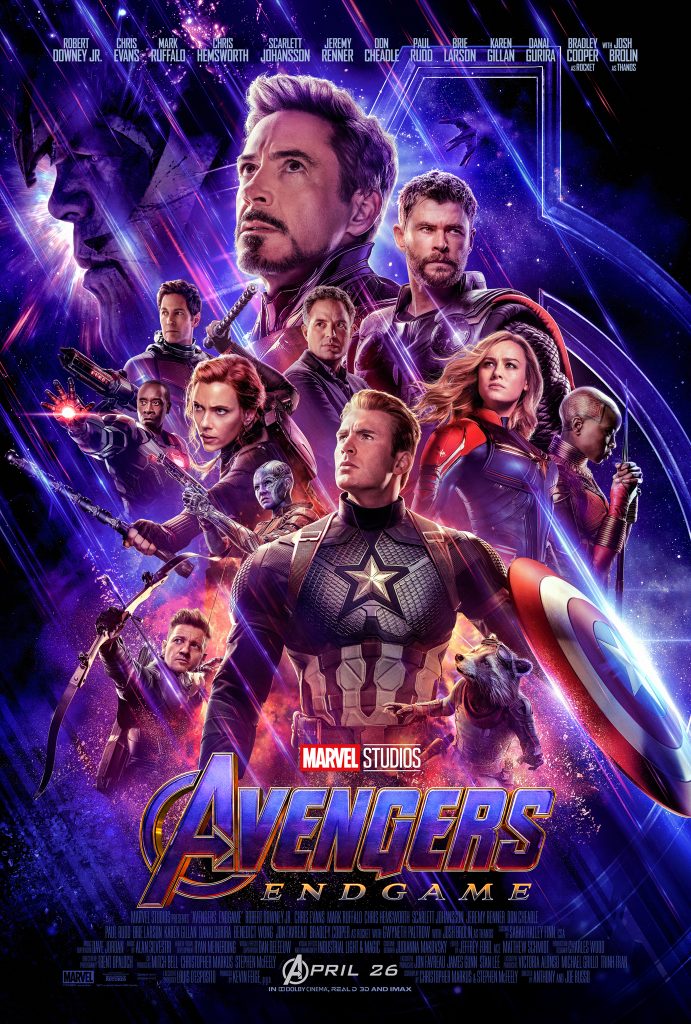
Graeme: Endgame sees our favourite superhero team and the ultimate badass return for a second round of chaos and destruction. Thankfully though, this time round not only addresses most if not all of the loose ends that were left during Infinity War, but nicely rounds up the last 10 years of MCU and the perfectly imperfect saga that came from nothing. Endgame itself plays to the hearts of the fans and pays homage to each movie in the franchise. Easter egg videos on YouTube have the total count sitting at over 200 in just over 3 hours which most would agree is an achievement in itself. It’s worth remembering that this movie is the last in a 20+ movie saga, so there is a whole bunch of information to deliver, as well as loose ends to tie up, and everything to bring together for the final show down between the unstoppable force that is the Avengers and the immovable object that is Thanos. I don’t think it’s necessary to go back and watch all 3 phases of the MCU again, unless you realistically had the time. What Endgame did for me was give a fresh perspective on relationships and interactions from previous movies, with you knowing how it ends before maybe even the MCU production teams did. 10 years and it all boils down to this final showdown. The fighting comes very quickly, and it verges on the obscene at times, but concessions have to be made for Endgame considering the weight that is on the entire MCU team to get this saga wrapped up as tightly as possible, and after Infinity War, it was hardly going to end in a handshake and a catch up over tea and cake. Huge fight scenes should have been expected and are definitely delivered. There will be tears, big ones. There will be laughs, also big ones. There is only one major disappointment that lingered with me after watching Endgame and contemplating what’s next for Marvel…
What on Earth happened to –
Andy: If Comic book heroics and bloody fantasy aren’t your thing, you might still be able to catch Greta, directed by Neil Jordan. It’s a steadfastly low-key, old fashioned thriller that at once feels like a Hitchcock tribute piece by way of Brian De Palma. Isabelle Huppert is the titular Greta, the lonely senior citizen that Chloe Grace Moretz’s Frances befriends, after returning Greta’s lost handbag to her. Maika Monroe is on scene-stealing form as Frances’ best pal & flatmate, Erica, who is smarter than she lets on. Stephen Rea turns up in a small role as a private detective. Stylish, silly, and thrilling, and worth a watch.
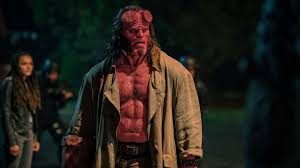
David Harbour as Hellboy
April was the pre-blockbuster blockbusting month that saw the likes of Shazam!, Hellboy, Pet Semetary, and Missing Link come and go. The less said about this new rendition of Hellboy the better. However, where’s the fun in that?
There are so many things wrong with Neil Marshall’s take on Mike Mignola’s demonic paranormal investigator, it is tricky to isolate just one problem with the production. The plot, the script, the design and special effects, most of the acting (McShane and Jovovich are not at their best here); all round, it’s a poor-to-average bloody mess. David Harbour, in the lead title role, at least comes out of it with his reputation intact; the make-up allows him some expression but it is not as well designed as Ron Perlman’s in the previous Hellboys. Harbour’s Hellboy, however, is fun. More impudent than Perlman’s take, with a degree of soulfulness to anchor the silliness. A shame that he cannot save this unstylish, distastefully gory, often rushed-looking new update on a great comic. Guillermo del Toro’s movies weren’t perfect, or even great adaptations, but they are in every way superior to this stinker.
Pet Semetary is a margin better than Hellboy but, sadly, isn’t great either. It is a film that seems content in its ordinariness with a script determined not to answer any of its own interesting questions. Instead it fixates on the familiar dull, predictable, jumpy gruesome slasher horror. The cast do a good job but they are way better than this film deserves. It is a continuing puzzle how film-makers keep struggling to produce quality adaptations of King’s books. It seems IT is the anomaly. Maybe there is a longer, more nuanced cut of this film on an editor’s floor. And it took two directors to make this.
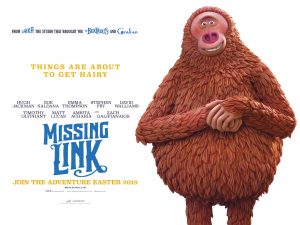 Thank goodness for Missing Link. Laika Animation Studios are going from one great film to another – a solid run of hits, each subsequent film feeling fresh and full of ideas. Missing Link is no different. A whimsical adventurous jaunt, its 19th century setting is evocatively brought to life in true Laika style, from lush forests and frontier townships, to the opulent halls of Sir Lionel’s club. Exploration escapades abound, with a good, hearty sense of humour. A great voice cast, led by Hugh Jackman, Zach Galifianakis, and Zoe Saldana, breathe character into the beautiful visuals, fuelling this breezy fun-for-all-the-family multiplex crowd pleaser. However, look deeper and you will find an excellent script, written by the director, Chris Butler, that is full of humourous warmth and strong emotions, and how we all long to belong. More in line with Laika’s own Box Trolls than with Kubo and the Two Strings. Definitely one of the films of the year so far.
Thank goodness for Missing Link. Laika Animation Studios are going from one great film to another – a solid run of hits, each subsequent film feeling fresh and full of ideas. Missing Link is no different. A whimsical adventurous jaunt, its 19th century setting is evocatively brought to life in true Laika style, from lush forests and frontier townships, to the opulent halls of Sir Lionel’s club. Exploration escapades abound, with a good, hearty sense of humour. A great voice cast, led by Hugh Jackman, Zach Galifianakis, and Zoe Saldana, breathe character into the beautiful visuals, fuelling this breezy fun-for-all-the-family multiplex crowd pleaser. However, look deeper and you will find an excellent script, written by the director, Chris Butler, that is full of humourous warmth and strong emotions, and how we all long to belong. More in line with Laika’s own Box Trolls than with Kubo and the Two Strings. Definitely one of the films of the year so far.
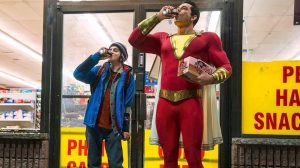
Jack Dylan Grazer and Zachary Levi in Shazam!
Graeme: As time goes on, no one can deny that DC are better at the one shot stories rather than their sub-par team-up efforts, that the biggest of DC fan would find hard to argue are able to compete with the likes of Marvel. One thing that can be said, however, is that DC have been finding their feet with their solo hero efforts and Shazam! has only solidified that argument. One of DC’s lesser-known heroes has allowed DC to open the idea of humour into their movies which, previously, has been nothing but cringe-inducing. Being one of the more “fun” characters of the DCU makes this movie what it is, a good, fun, enjoyable play through the life of a 14 year old turned superhero and all the catastrophes that you would expect to come with that. There are hearty chuckles and a couple of “In the feelz” moments that, although slightly transparent and predictable, played well into the overall feel of the movie. One thing I always had issue with DC over was their filming of action scenes. The overuse of freeze-frame/slow motion videography (that went out of style after The Matrix trilogy milked it dry) seemed to be the only tool in their arsenal at points, and thankfully that’s gone. There are still uses of it, but it’s more tastefully done and adds to the atmosphere rather than a “here it comes again” feeling in your stomach. DC should definitely stick to their solo hero movies. I’m not opposed to sequels (unless it’s Iron Man 2. That can go in the fire) but going by the quality standard of the likes of Aquaman and Shazam!, DC need to leave the team ups alone. Well worth a watch.
I went into Dumbo expecting Burton to be all over this. The story itself almost seems to have been made for a film-maker like Burton, but he didn’t seem to capture that almost lunacy-infused magic that he is known for. This retelling of a classic was thin on plot. Stretching an hour long animation in to a two hour plus movie was always going to be a challenge, even for the biggest of Disney fans, there was a lot to ask for here and it never quite managed to hit the spot. Colin Farrell as the grumbling war hero father returning from war to take on both maternal and paternal roles would have been enough. Unfortunately, for some reason, Colin Farrell is missing an arm, which seems to play no part in the context of the story other than to maybe prove that the character was in a war? Maybe? As stated, Tim Burton failed to do his thing with Dumbo. The makings were there, considering how bonkers the theme of the original was, but he just wasn’t able to take it and make it his own which was disappointing. All this being said, it can’t be denied that Dumbo is fun to watch, if a little watery on plot. In true “new Disney” fashion, everything looks perfect, there is not an iota of detail missing from the wide angle shots and the circus scenes in general are pretty incredible to look at. Plus, let’s be real, Dumbo is cute as a button and there are a few laughs to be had at his dopey little face.
 Andy: Netflix have not been idle, and over the last couple of months there have been some great releases. Unicorn Store, starring and directed by Captain Marvel herself, Brie Larson, is surely one of the oddest films on the Netflix site. Larson plays Kit, a dropout art student who takes on a temp job, and ends up striving to own a unicorn, a transaction orchestrated by the Salesman (Samuel L. Jackson, in one of his finest wigs, and an array of eye-popping suits). Its frivolity may annoy you but its good natured charm wins out, mostly due to Larson’s performance (the lady can do no wrong). Just when you think it is all quirk no substance, it surprises you with some striking emotional scenes, and some of genuine comedic genius; the vacuum presentation sequence alone is awesome and hilarious.
Andy: Netflix have not been idle, and over the last couple of months there have been some great releases. Unicorn Store, starring and directed by Captain Marvel herself, Brie Larson, is surely one of the oddest films on the Netflix site. Larson plays Kit, a dropout art student who takes on a temp job, and ends up striving to own a unicorn, a transaction orchestrated by the Salesman (Samuel L. Jackson, in one of his finest wigs, and an array of eye-popping suits). Its frivolity may annoy you but its good natured charm wins out, mostly due to Larson’s performance (the lady can do no wrong). Just when you think it is all quirk no substance, it surprises you with some striking emotional scenes, and some of genuine comedic genius; the vacuum presentation sequence alone is awesome and hilarious.
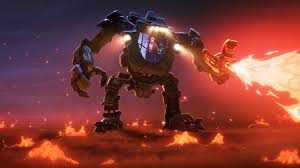
A still from ‘Suits’, one of the better short films from Love, Death and Robots
Love, Death and Robots is an animated anthology series, with the odd bit of live action. And do mind, this is definitely not a cartoon series for kids. Linked by the titular themes, this is a wild assortment of short films of a consistently high standard, featuring plenty of death, lots of sex/love, and plenty of robots – and gallons of gore. The styles vary in tandem with the content, from stunning photo-real animation, through to traditional 2D fare, and the spectrum between. Produced by Tim Miller (director of the first Deadpool film) and David Fincher (who hasn’t directed anything truly great since Fight Club), this series is well worth a look. Brimming with ideas, some of the shorts are original ideas, and some are adapted from other source material (The Dump from a Joe R Lansdale story, Beyond the Aquila Rift from an Alastair Reynolds story). The standard is high but there are some standouts; Suits is probably my favourite, about farmers who pilot battle mechs to protect their farmsteads against chitinous alien invaders; Good Hunting has a bizarre steampunk-alternate-history angle; Lucky 13 is pure class, a SF tale of a drop ship and the misadventures of its crew; and The Secret War sees soviet elite forces in action out in the wilds of Siberia, battling against a demonic invasion, and is as awesome as it sounds.
And how about The OA season 2… Wow. A great season that builds on the brilliant first, and just as out there. Creator/star Brit Marling uses this second season to explore some of the ideas proposed in the first, and how. Gripping tv, crammed with imaginative flair, that lingers long in the mind.
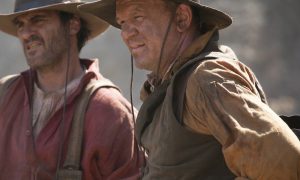
Joaquin Phoenix and John C. Reilly as Charlie and Eli Sisters
Coming and going from your local cinema, within the space of a week or two, The Sisters Brothers will, over time, be hailed as cult classic. A bonafide box office flop, this is a curious oddity. From its unusual title (adapted from the novel by Patrick deWitt) to its director (Frenchman Jacques Audiard, making his English-language debut) to its cast (John C Reilly, in a western? Really? And about time; he is awesome), there is nothing ordinary about this film. Reminiscent of Peckinpah at his most meandering, batshit crazy, John C. Reilly and Joaquin Phoenix are the titular brothers, a pair of mercenaries tasked with hunting down errant inventor Hermann Kermit Warm (an immensely likeable Riz Ahmed) and his mysterious formula. Jake Gyllenhaal appears as tracker John Morris, a soulful renaissance man searching for his place in the changing societal landscape of the Civilised West, also on the trail of the inventor. The cast are universally excellent throughout, including the briefest of brief cameos from Dutch legend, Rutger Hauer. Taking an array of familiar genre staples, the film delights in toying with your expectations. Peppered with bouts of stark violence, the film is at turns bloody, then ridiculous, and sometimes bloody ridiculous, the result being that it is always engaging, entertaining and often pleasantly surprising.
Oh, and if you have a Sky Cinema pass, The Meg has just been added. The Jason Statham vs prehistoric shark event picture from last summer is ridiculous fun, but is oddly restrained and not the over-the-top exploitation gorefest that you might be expecting. The Stath is on good form, leading an international cast of shark fodder. The effects and underwater sequences are bold and well shot, and there is just enough Plot and Science to make it all believable hokum.
Geekzine editor Andrew Jamieson is the award-nominated author of steampunk fantasy novels, The Vengeance Path, and its sequel, Children of War, both available from the Amazon Kindle Store.
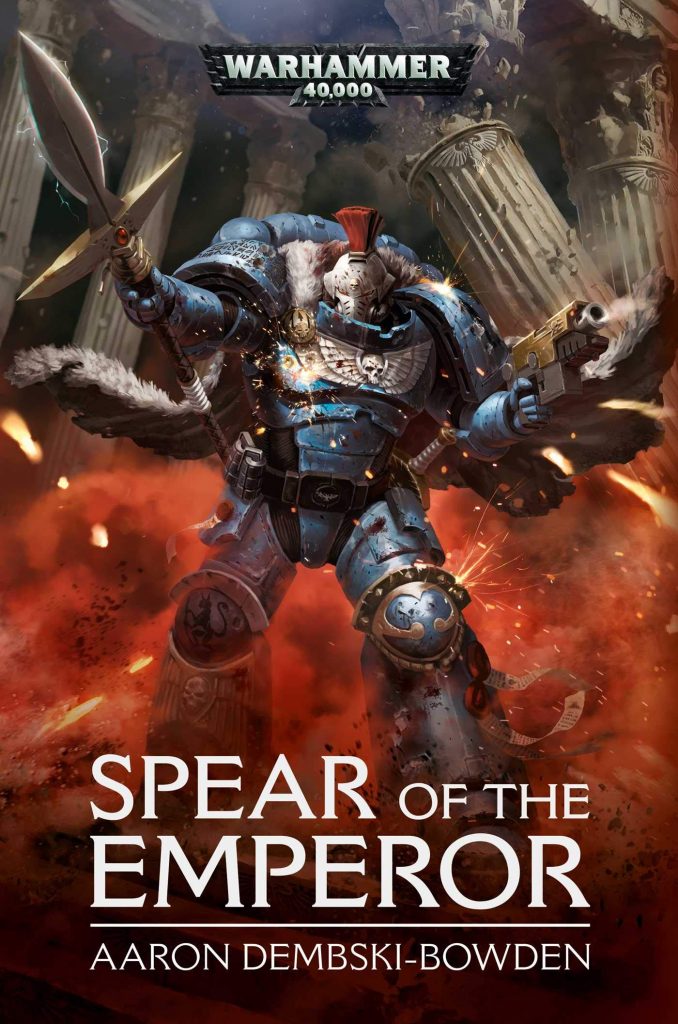 I’ve been reading Space Marine novels for approximately sixteen years now, and there have been some truly great ones. A cursory pick of the best includes Brothers of the Snake by Dan Abnett, Angels of Darkness by Gav Thorpe, and Storm of Iron by Graham McNeill. All very different, all featuring the Adeptus Astartes of the Warhammer 40k universe. Aaron Dembski-Boden’s latest novel, Spear of the Emperor, I feel belongs to that halcyon list.
I’ve been reading Space Marine novels for approximately sixteen years now, and there have been some truly great ones. A cursory pick of the best includes Brothers of the Snake by Dan Abnett, Angels of Darkness by Gav Thorpe, and Storm of Iron by Graham McNeill. All very different, all featuring the Adeptus Astartes of the Warhammer 40k universe. Aaron Dembski-Boden’s latest novel, Spear of the Emperor, I feel belongs to that halcyon list.
